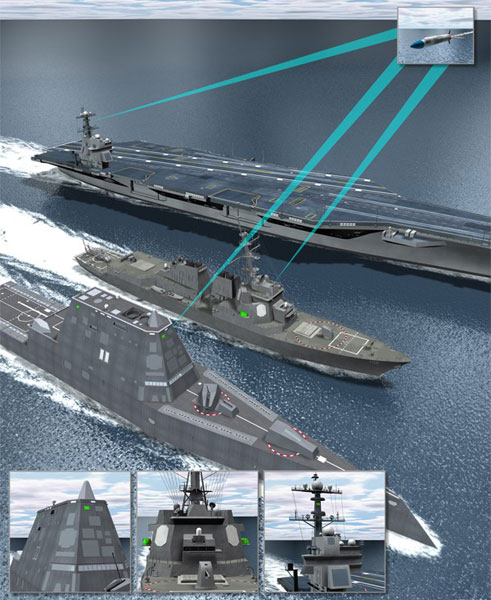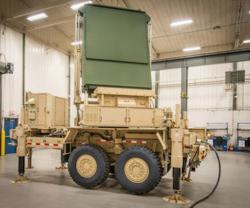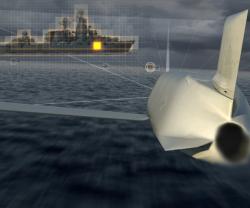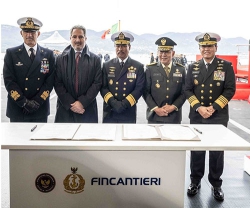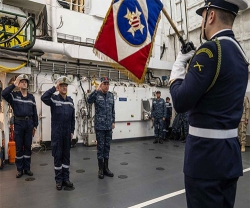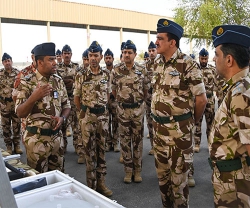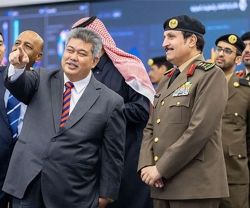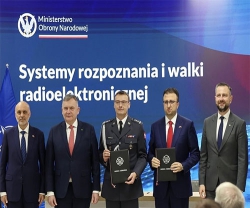Lockheed to Upgrade US Navy Electronic Warfare Defenses
02.04.2013 North America
The U.S. Navy awarded Lockheed Martin (LM) a $57 million contract to upgrade the fleet’s electronic warfare defenses against anti-ship missile threats.
Under this low-rate production contract for Block 2 of the Navy’s Surface Electronic Warfare Improvement Program (SEWIP), Lockheed Martin will upgrade the AN/SLQ-32(V)2 system found on all U.S. aircraft carriers, cruisers, destroyers and other warships with key capabilities to determine if the electronic sensors of potential foes are stalking the ship.
“The SEWIP Block 2 upgrade will ensure the AN/SLQ-32 system continues to outpace the threat and establishes a framework to easily install future upgrades,” said Joe Ottaviano, SEWIP Program Director for Lockheed Martin Mission Systems and Training.
“The system is the first sensor to be fully compliant with the Navy’s Product Line Architecture strategy, which facilitates the rapid introduction of new technology into the fleet. By using commercial-off-the-shelf components, we provide additional cost savings and ease of maintenance for sailors,” he added.
Block 2 is the latest in an evolutionary succession of improvement “blocks” the Navy is pursuing for its shipboard electronic warfare system, which will incrementally add new defensive technologies and functional capabilities. The Navy competitively awarded Lockheed Martin a contract in 2009 to develop SEWIP Block 2 and the company recently completed successful integration and test activities for two engineering development models.
Work on the SEWIP program will be performed at the company’s Syracuse, New York facility, which houses a new electronic warfare system test facility.
In January 2012, Lockheed Martin teamed with Raytheon Company, the original developer of the AN/SLQ-32, to pursue the Navy’s competitive SEWIP Block 3 program, which will upgrade the system’s electronic attack electronic warfare capabilities. The team demonstrated its potential Block 3 solution at last summer’s multi-national Rim of the Pacific naval exercises. A formal Navy request for Block 3 proposals is anticipated later this year.
Under this low-rate production contract for Block 2 of the Navy’s Surface Electronic Warfare Improvement Program (SEWIP), Lockheed Martin will upgrade the AN/SLQ-32(V)2 system found on all U.S. aircraft carriers, cruisers, destroyers and other warships with key capabilities to determine if the electronic sensors of potential foes are stalking the ship.
“The SEWIP Block 2 upgrade will ensure the AN/SLQ-32 system continues to outpace the threat and establishes a framework to easily install future upgrades,” said Joe Ottaviano, SEWIP Program Director for Lockheed Martin Mission Systems and Training.
“The system is the first sensor to be fully compliant with the Navy’s Product Line Architecture strategy, which facilitates the rapid introduction of new technology into the fleet. By using commercial-off-the-shelf components, we provide additional cost savings and ease of maintenance for sailors,” he added.
Block 2 is the latest in an evolutionary succession of improvement “blocks” the Navy is pursuing for its shipboard electronic warfare system, which will incrementally add new defensive technologies and functional capabilities. The Navy competitively awarded Lockheed Martin a contract in 2009 to develop SEWIP Block 2 and the company recently completed successful integration and test activities for two engineering development models.
Work on the SEWIP program will be performed at the company’s Syracuse, New York facility, which houses a new electronic warfare system test facility.
In January 2012, Lockheed Martin teamed with Raytheon Company, the original developer of the AN/SLQ-32, to pursue the Navy’s competitive SEWIP Block 3 program, which will upgrade the system’s electronic attack electronic warfare capabilities. The team demonstrated its potential Block 3 solution at last summer’s multi-national Rim of the Pacific naval exercises. A formal Navy request for Block 3 proposals is anticipated later this year.
Previous PostRockwell Collins Conducts CDR for CRIIS Program
Latest news
Latest events
Doha International Maritime Defence Exhibition & Conference (DIMDEX 2026)
19 - 22 Jan 2026Doha - QatarUMEX – SimTEX
20 - 22 Jan 2026ADNEC Centre Abu Dhabi, - United Arab EmiratesWorld Defense Show (WDS) 2026
08 - 12 Feb 2026Riyadh - Saudi ArabiaSAHA EXPO International Defence & Aerospace Exhibition
05 - 09 May 2026İstanbul Expo Center - Turkey

